
Randsburg is located just off Highway 395 in eastern Kern County, known as the Rand Area. Travelers will be transported back in time to the early gold mining days of California when they visit the Living Ghost Town of Randsburg at an elevation of 3,500 feet,
Randsburg was at one time home to nearly 3,000 miners and their families. When gold was first discovered in 1895, prospectors flooded the area and quickly formed Rand Camp, aptly named after the Witwatersrand mining area in South Africa.
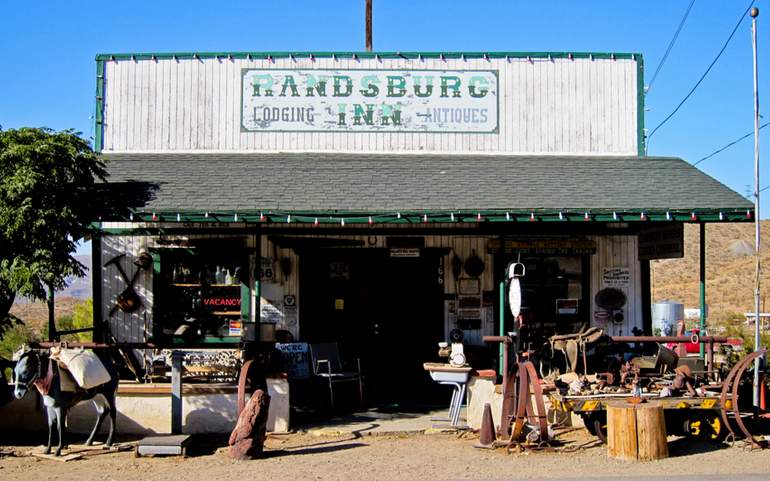
Ransburg Things To See
Although gold fever no longer draws visitors, tourists still flock to explore the town’s historical past. They can be seen wandering Butte Avenue, taking in the sights of dilapidated structures and historical monuments, including a tiny jail cell and rusted-out abandoned vehicles scattered throughout empty lots.
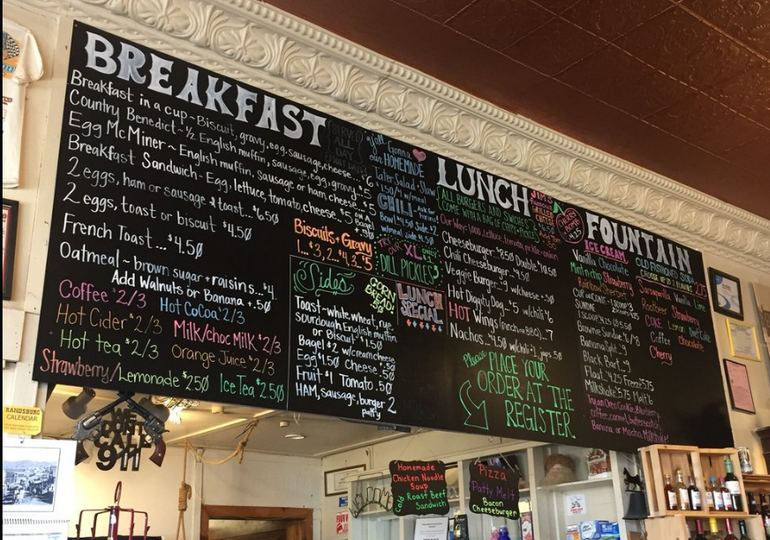
Randsburg General Store
In town, you will find antique shops, an authentic western saloon, an opera house, a general store with an old-fashioned soda fountain famous for its “Black Bart” floats– two small inns, and the infamous “Joint” where travelers can wet their whistles at the ultimate hole-in-the-wall with its Mason jar lamps lighting the outside facade.
All around the town of Randsburg, you see bumper stickers affixed to various vehicles and business windows reading “Where the hell is Randsburg?, and the surrounding outhouses are bedecked with cheesy, hand-painted signs like “Her’n” and “Hiz’n” or “We Got Our Bailout.” One privy has a TV antenna.

There is also a garage with a school bus with a Volkswagen bus welded on top, decked out with a sundeck and flower boxes hanging from the side. There is some quirky sign, monument, or artifact from the present back to the town’s glory days just about everywhere you turn.
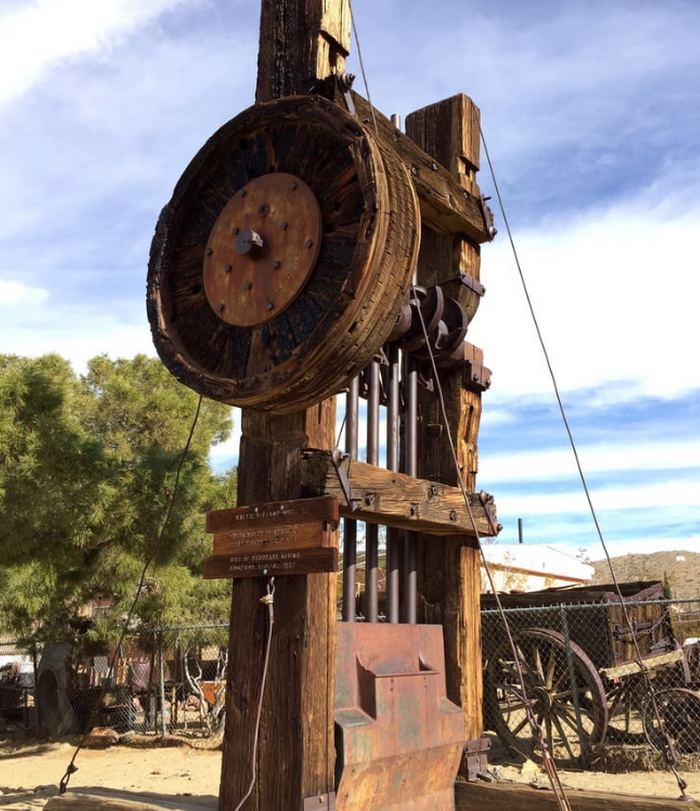
Rand Desert Museum
Nearby Historical Marker No. 938 identifies The Rand Desert Museum, one of the first museums in Kern County, built in 1942. It houses some unique artifacts. An outdoor area is full of old rusty mining machinery, including a 5-ton Steam Locomotive used in the Yellow Aster Mine in the early 1900s—Rand Museum website.

Popular With Off-Roaders.
Besides attracting history buffs, geologists, and rockhounds from around the country, the town is also a hotbed for off-roaders. Thousands every year come to explore this creepy little spot on the map. It’s common to hear the sounds of squeaking gates with the haunting shriek of an off-road vehicle far off in the hills.
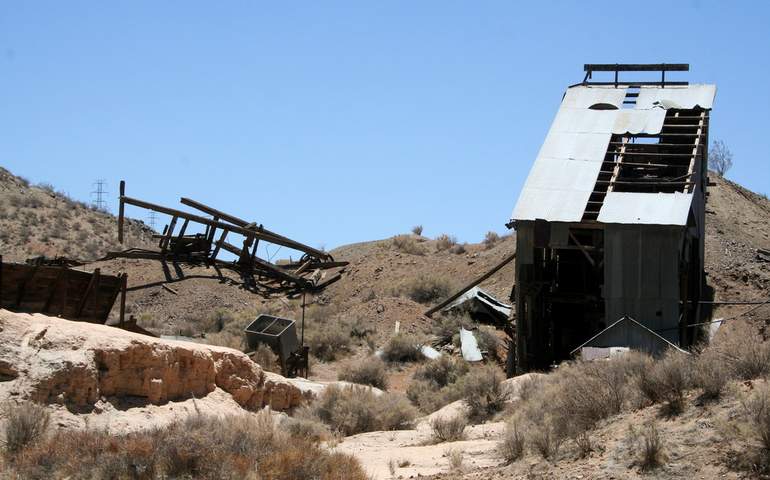
The area is also teeming with wildlife, and some of the animals that live in Randsburg year-round are kit foxes, jackrabbits, cottontails, hawks, eagles, and coyotes. The Costa’s hummingbird visits during the summer, while the desert tortoises inhabit the nearby Desert Tortoise Research Natural Area.
The weather is typical of the high desert, with hot and dry summers reaching average highs of 110 degrees. Winter temperatures can drop as low as 10 degrees with the occasional dusting of light snow.

Getting to Randsburg Ghost Town
Randsburg is west of U.S. Route 395 between Kramer Junction to the south and Ridgecrest to the north.
Besides the two inns in town, there are motels in nearby Ridgecrest and a couple of campgrounds within a short driving distance, including Walker Pass Campground and Red Rock Canyon State Park.
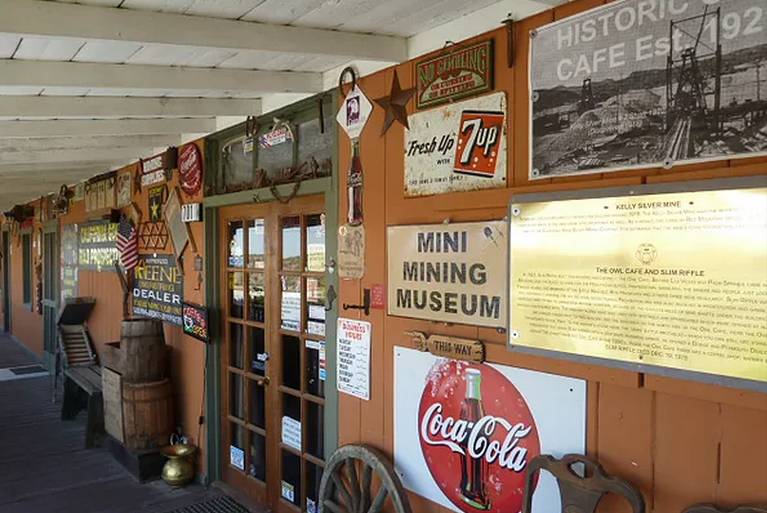
Red Mountain Owl Cafe Museum
Just a few miles south of Randsburg is the town of Red Mountain. Be sure to stop in at the historic Owl Cafe Museum. Located on Highway 95, the Owl Cafe contains pictures and artifacts from the town’s early mining years.
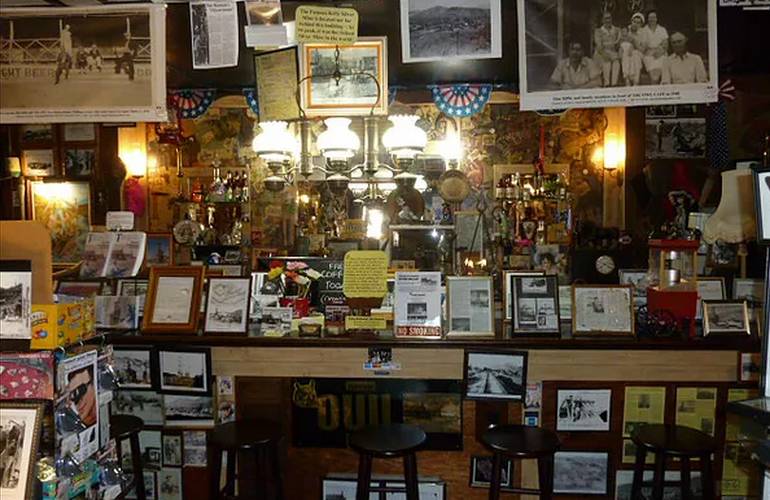
Because there are numerous ghost towns, OHV areas, and wilderness lands surrounding the region, including Johannesburg and Red Mountain, Randsburg is the perfect outdoor recreation paradise. Next time you take a trip to Mammoth Lakes, take the time to visit the living ghost town.
In from Westminster love Ransburg with family dirt biking . Go around town later to see the sites.
If you are interested in visiting Burro Schmidt’s mine using a dirt bike, it is easily doable from Randsburg. Just make sure you have enough gas to make the round trip. And not to be alarmist, but there are still open mines all over the place in the surrounding desert, some of them just in the middle of nowhere so use some caution when riding in the open desert. Most of the obvious ones are fenced or plugged but California still has thousands of unmarked and open mine shafts that go straight down.
From my understanding the current town laws prohibit riding a non-plated bike through town, so you may have to coast your bike down the street until you hit the desert.